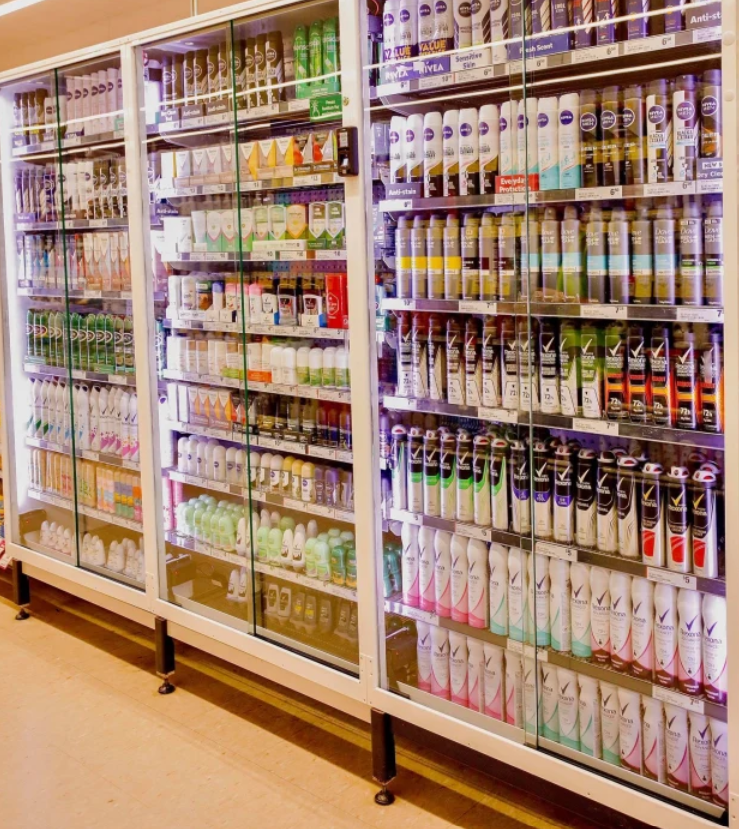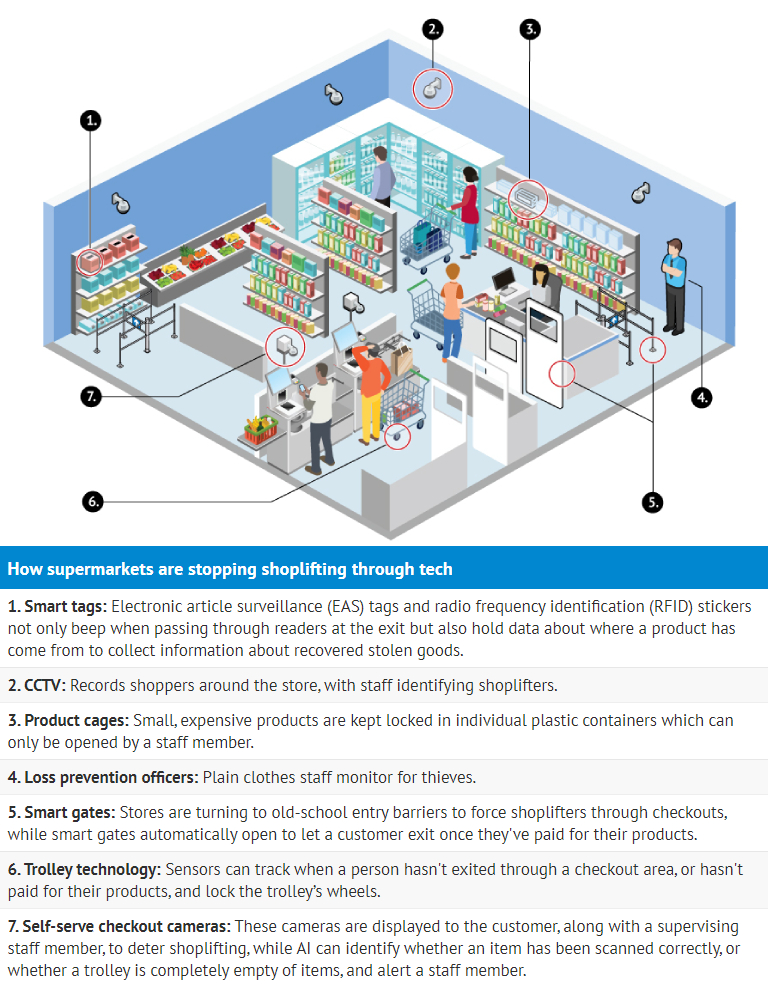Supermarkets are turning to high-tech security after a spike in shoplifting cases caused by the rising cost of living, a retail black market and opportunities from self-serve checkouts.
Australian Retail Association CEO Paul Zahra said retailers were reporting a sharp increase in both the frequency and severity of retail crime this year, with stores expected to report higher rates of stock loss in this year’s annual results.
Estimates on how much shoplifting costs the retail sector annually could be as high as $9 billion, he said, totalling between two and three per cent of total stock and equating to a 25 per cent loss in profit.
“It has a significant impact, especially on mum-and-pop stores, which is why retailers are taking this super seriously.”
The number of offences of stealing from retail stores increased in NSW by nearly 40 per cent between March 2021 and 2023, data from NSW Bureau of Crime Statistics and Research shows, while a third of all juveniles on remand in the latest quarter were there for theft.
A Coles spokesperson confirmed that stores used technology in their security, including trolley locking and electronic article surveillance.

Trolley locking technology prevents people from leaving without paying. CREDIT: LOUISE DOUVIS
“While most of our customers do the right thing, unfortunately, a small number don’t. We know that retail crime is on the increase across many retailers, and we continue to work closely with police in this space,” the spokesperson said.
A Woolworths spokesperson also said it had seen an increase in all types of retail crime.
“We have a number of initiatives that we use, both covert and overt, to help reduce retail crime and keep our team members safe in our stores,” the spokesperson said.
MST retail analyst Craig Woolford said supermarkets had several ways of preventing shoplifters.
“Shoplifting has taken off recently … and the escalation is worrying for retailers,” he said, adding shoppers are likely to see an increase in all forms of preventative measures.
He said many self-serve checkouts had cameras that watch shoppers, while artificial intelligence detects any inconsistencies or if the trolley is not empty when the customer tries to pay.

Products are locked in cabinets to prevent shoplifting at a NSW Woolworths.
The trolley locking technology employed by some supermarkets uses smart gates at the exit which fasten the wheels if someone tries to leave without paying.
High-value and easily pocketable items are now frequently placed in plastic containers or have electronic article surveillance tags that beep at the exit or radio frequency identification stickers that can be used to track back to the original store when recovered.

ARTWORK: MONIQUE WESTERMANN, ISTOCK
They also employ low-tech solutions, such as separate exits and one-way entrances to prevent a quick getaway, CCTV recordings and plain-clothed loss prevention officers.
Woolford said the increase in stealing was not just down to the rising cost of living, but because of the ability to resell stolen goods.
“There are a lot of products, like mainstream household cleaning products or high-value products like red meat, that are easily sold either on an e-commerce platform or a secondary market,” he said.
But technology only goes so far: “The real challenge is staff are rightly told not to stop shoplifters, and some of it has become quite brazen. ”
National Secretary of the SDA, the union for retail, fast food, warehouse and online retail workers Gerard Dwyer said retailers’ and legislative focus should turn to workplace design that inhibits theft and instances of customer abuse, as well as law reform around customer abuse and violence.
“Shoppers should remember that retail workers are providing an essential service – ensuring you get the essentials of life to put food on the table and provide for your children,” he said.
Original article published by: The Sydney Morning Herald




